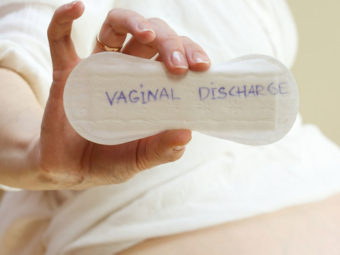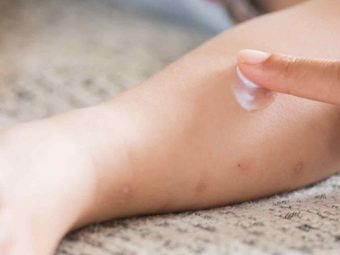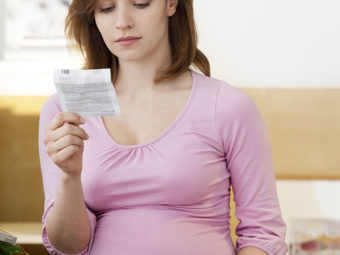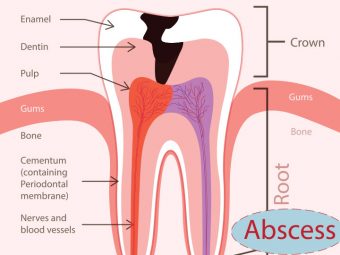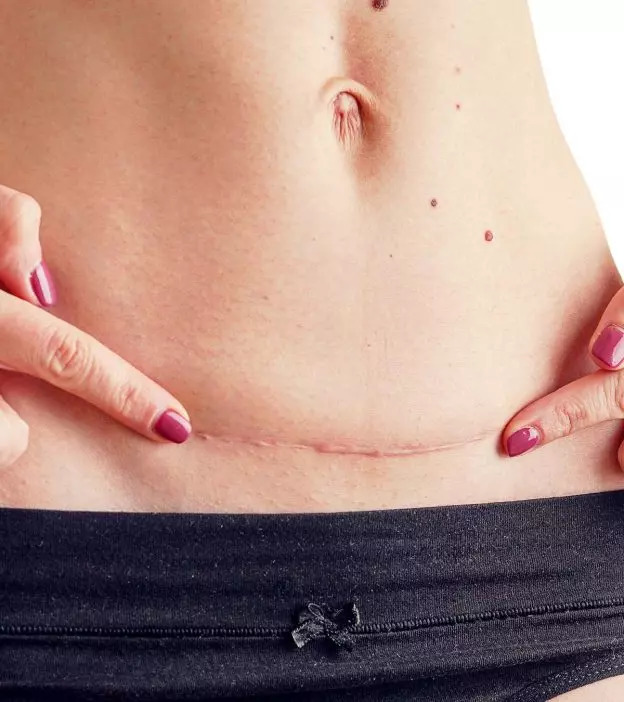
Image: iStock
A C-section scar infection may occur in 3-15% of women who deliver through a C-section.The number of women giving birth through C-sections has increased significantly in the past few decades(1). A prompt diagnosis and management of C-section scar infection can help improve its prognosis and prevent complications.
Read this post to learn more about the causes, signs, diagnosis, treatment, and prevention of C-section scar infection.
What Is A C-Section Wound Infection?
Image: IStock
A c-section wound infection, also known as post-cesarean section wound infection, is a bacterial infection that develops aftercesarean delivery. It is due to bacterial infecting the surgical site(2).The infection could usually happen due to numerous types of bacteria and may be a superficial skin infection or a more dangerous deeper pelvic wound abscess. It is essential to be seen by a doctor as soon as possible to diagnose and treat the problem
What Are The Causes Of Infection After Cesarean Birth?
The following are risk factors for a wound infection(6)(7)(8)(9)(10):
- Obesity
- Increased weight
- Previous cesarean delivery
- Diabetes
- An infection called intraamniotic infection that developed during labor
- Prolonged rupture of membranes
- Repeated vaginal examinations
- An emergency Cesarean delivery
 Quick fact
Quick factKnowing the symptoms of a c-section infection can help you start the treatment in time.
What Are The Signs Of A Post-Cesarean Wound Infection?
Image: Shutterstock
The following are a few symptoms of an infection after c-section.
- Feverand possible chillstypically with a temperature higher than 100.4 F can be one of the symptoms of a c-section infection.Swelling, redness, or increased painaround the incision or surgical site. Anyfluidcoming out from the incision, an opening of the incision, andmalodorousvaginal dischargeare also c-section infection symptoms(12).
- Discomfort orpain in the lower abdomenregion for several days after the surgery.
- Heavy bleeding and difficulty while urinatingare also signs of a c-section infection. In addition to this, you could experience pain and a burning sensation while urinating, and blood in the urine if you have developed an infection(13).
If you have noticed any of these symptoms, consult your doctor for a proper diagnosis.
How Is A Post-Cesarean Wound Infection Diagnosed?
The doctor would check for tenderness, fever, swelling, or any other sign that could indicate an infection.Daily inspection of the incision site is the most vital part of the postoperative diagnosis. However, most of the infections start to appear after a week of surgery. Therefore, doctors advice new mothers to be attentive to these signs. If you see the symptoms, visit the doctor for further diagnosis and timely treatment(14).
How To Treat A Wound Infection?
Image: IStock
剖腹产感染可以治疗使用(10):
- Antibiotics:Doctors usually recommend treating cesarean wound infections such as cellulitis with antibiotics.If caught early, oral antibiotics are used, however for more advanced cases,intravenous antibioticsiXAntibiotics administered into a vein via an injection or catheter to treat or prevent bacterial infectionsmay be necessary.
- Drainage: For cases where there is a pocket of abscess or pus, opening the skin incision to allow drainage of the infection may be warranted
- Dressing the wound:Some infection conditions may require dressing the wound regularly to close the wound and promote healing.
The treatment can be effective and your recovery faster when you follow a few tips.
How to take care of a C-Section Infection Wound?
Image: Shutterstock
Here are some things that you need to take care of.
- Take and complete the antibiotics.
- Go for regular cleaning and dressing of the wound as directed.
- Avoid applying any lotions or creams that may contain chemicals harmful to your skin. And wear loose and lightweight clothes that don’t rub on your wounds.
- You can always get postpartum medical care from your doctor if the wound doesn’t seem to heal or if you experience more pain at the surgical site.
- Consume healthy food and lots of liquids.
 Quick tip
Quick tipKeep reading to learn how you can prevent an infection or minimize its risk.
Can You Prevent C-Section Wound Infection?
Image: IStock
You may not be able to entirely prevent the infection after a c-section , but you can take certain precautions to avoid any complications.
- Maintain a healthy weight:Obesity is one of the risk factors of a c-section wound infection(6). Hence, pregnant women should try maintaining theirweight during pregnancyby exercising or consuming a healthy diet.
- Control diabetes:Gestational diabetesiXA condition where the pregnancy's hormonal and physical changes interfere with the body's use of insulin, causing an elevated blood sugarcould cause more complications related to the infection after a c-section(15). Therefore, pregnant women should try keeping their glucose levels in check.
- Treat other conditions/diseases:If you are suffering from any disease/illness or have any pre-existing conditions that may trigger complications with a c-section infection, try to treat them before the due date.
Frequently Asked Questions
1. Why does my C-section scar hurt?
In rare cases, the endometrial tissue grows at the site of a C-section scar. This tissue may grow outside or inside the uterine walls, hurting the scar. Treatment may involve medical or surgical intervention (16) (17).
2. How many C-sections can a woman have?
Every woman is unique, and so is their body. Since the risk of C-sections starts increasing after the third cesarean, experts recommend that women can have a maximum of three C-sections (18).
3. Is it normal for a C-section incision to pus?
No. While you may experience swelling and redness at theincisioniXA cut in the body made for surgical purposesite after cesarean delivery, pus seeping out from the incision site is a sign of surgical site infection(12).
4. Can internal stitches open after C-section?
Yes. The internal cesarean incision on the uterus can also open or rupture following a cesarean delivery. However, its occurrence is rare(22).
5. How many layers are cut during C-section?
During a cesarean section, three layers of the uterus, including the serosal outer layer (perimetrium), the muscle layer (myometrium), and the inside mucosal layer (endometrium), are incised(23).
C-section scar infection is uncommon, but being obese, repeated or emergency cesarean delivery, diabetes,intraamniotic infectioniXInflammation of the placental and embryonic membranes caused by a bacterial infection, and many other factors may increase its risk. It is a bacterial infection that can be superficial or have a more severe deeper pelvic woundabscessiXA swollen area of skin filled with pus and debris resulting from a bacterial infection. However, with adequate medical treatment, it can be managed. So, if you experience any symptoms, see a doctor specializing in obstetrics and gynecology for the diagnosis as soon as possible. To reduce the risk of infection, take proper care of the C-section wound and visit your doctor if you have any concerns.
Infographic: Infection After C-Section: Additional Risk Factors And Complications
Although C-section has become a common surgical mode of delivery, post-surgery healing is not easy as you could be exposed to infections in the incisional region. Here is an infographic with the possible risk factors and complications following an infection after C-section.
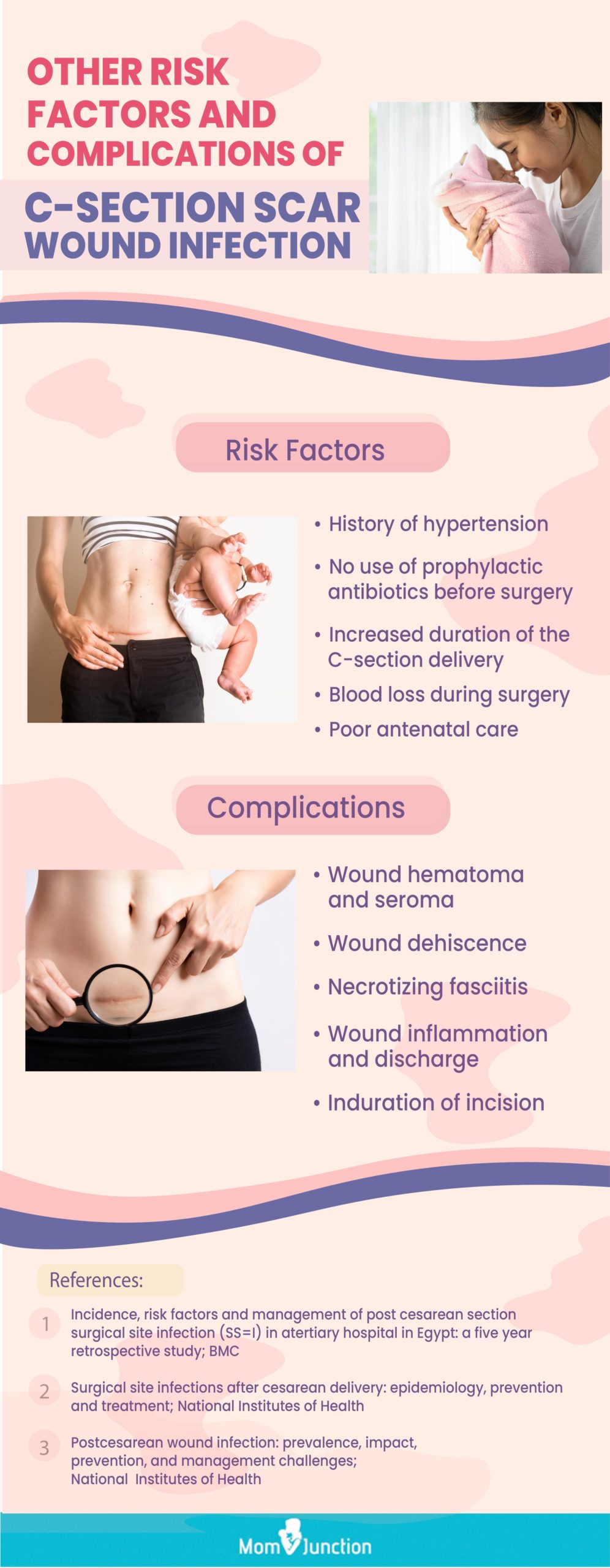
Illustration: Momjunction Design Team
Get high-quality PDF version by clicking below.
Download Infographic
Key Pointers
- A C-section scar infection develops post-cesarean delivery, resulting from obesity, diabetes, etc.
- Fever, abdominal pain, and bleeding may indicate an infection and needs immediate attention by a doctor.
- Cleaning and dressing the wound regularly would promote healing.
- To avoid C-section scar infection, a pregnant woman should maintain her weight and keep other health issues in control.
Learn about post-cesarean infection and antibiotic prophylaxis in this informative video. Understand the risks and how to prevent them with the right treatment.
References:
2. M. M. Osela;Study on Post Caesarean Section Wound Infection at Misurata Central Hospital and Al-Khoms Teaching Hospital, Libya; IOSR Journal of Dental and Medical Sciences (2016)
3.The Mother With An Infection: Infectious Diseases; UTMB Neonatology Manual
4.Skin or Soft Tissue Abscess; University Health Services: The University of Texas at Austin
5. S. Hamadeh et al.;Journal of Gynecology and Neonatal Biology(2017)
6. S. N. Conner;Maternal Obesity and Risk of Post-Cesarean Wound Complications; American Journal of Perinatol (2014)
7. G. Choudhary, M. K. Patell, and H. A. Sulieman;The effects of repeated caesarean sections on maternal and fetal outcomes;Saudi Journal of Medicine & Medical Sciences (2015)
8. K. E. Diebold;Risk factors for wound complications following cesarean delivery; University of Iowa Research Online (2014)
9.Jido TA, Garba ID. Surgical-site infection following cesarean section in Kano, Nigeria. Ann Med Health Sci Res 2012;2:33-6.
10. T. Kawakita and H. J. Landy;Surgical site infections after cesarean delivery: epidemiology, prevention and treatment; Maternal Health, Neonatology and Perinatology (2017)
11.Cesarean Wound Complications; Department of Obstetrics and Gynecology Cesarean Wound Complications: University of Michigan Health System
12.What to know after having your baby (if you had c-section); UNM Hospitals
13.When to call your doctor after cesarean; Health Pages (2018)
14. S. Zuarez-Easton, N. Zafran, G. Garmi, and R. Salim;Postcesarean wound infection: prevalence, impact, prevention, and management challenges; International Journal of Women’s Health (2017)
15. E. T. Martin et al.;Diabetes and Risk of Surgical Site Infection: A systematic review and meta-analysis; Infection Control & Hospital Epidemiology (2015)
16. E. T. Martin et al.;Diabetes and Risk of Surgical Site Infection: A systematic review and meta-analysis; Infection Control & Hospital Epidemiology (2015)
17. Fatimah Alnafisah et al.;Skin Endometriosis at the Caesarean Section Scar: A Case Report and Review of the Literature; National Library of Medicine (2018)
18. Dah-Ching Ding and Senzen Hsu;Scar endometriosis at the site of cesarean section; National Library of Medicine (2006)
19.How Many C-Sections Can A Woman Have?Vital Record
20. Tetsuya Kawakita and Helain J. Landy;Surgical site infections after cesarean delivery: epidemiology, prevention and treatment; National Library of Medicine (2017).
21.The Do’s and Don’ts of Healing from a C-Section; Intermountain Healthcare.
22.Uterine Rupture; Cleveland Clinic
23. Sharon Sung and Heba Mahdy;Cesarean Section; StatPearls [Internet]; National Library of Medicine (2022).













